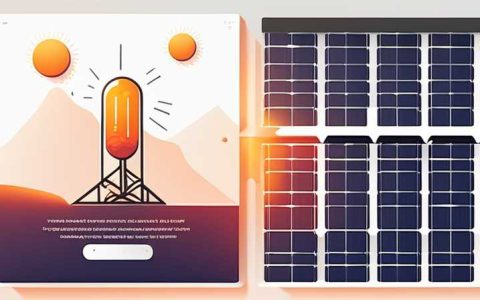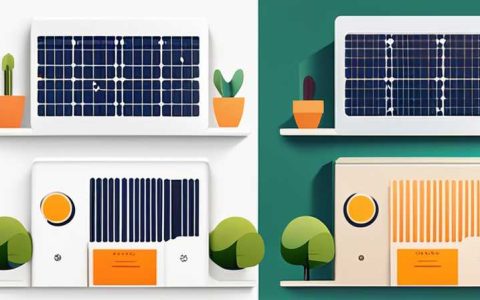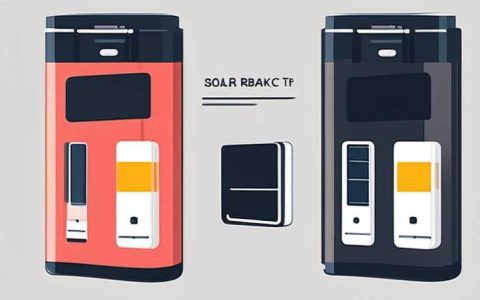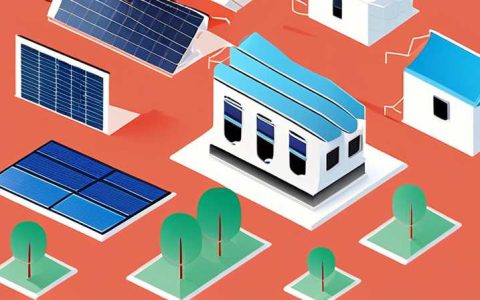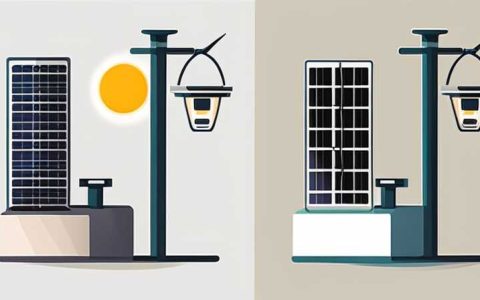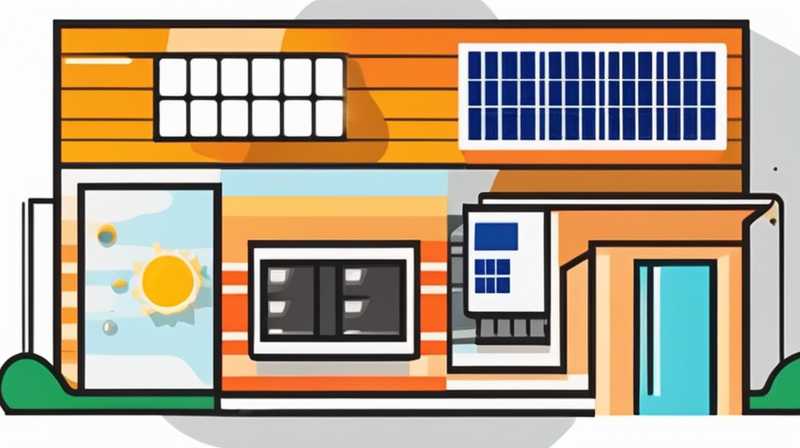
Installing a solar power station involves several critical steps that must be carefully followed to ensure efficiency and reliability. 1. Assessing energy needs, 2. Choosing the right solar panels, 3. Installing system components, 4. Connecting to the grid or off-grid setup, 5. Ensuring maintenance and monitoring.
The first step, assessing energy needs, involves calculating your energy consumption to determine the capacity required for your solar power station. This initial evaluation is essential, as it informs the selection of the appropriate size and type of solar panels. Solar panels come in various types, including monocrystalline, polycrystalline, and thin-film, each with unique advantages and disadvantages. The panel’s efficiency rating, warranty, and temperature coefficient should also be considered.
Once energy needs are assessed and the right solar panels are selected, the next critical phase focuses on installing the system components. This includes mounting the panels, connecting inverters, and ensuring proper wiring. Those planning to connect to the grid must also understand the regulations governing interconnection in their area to avoid legal complications.
Further along, the choice between an off-grid system or a grid-tied system becomes significant. 1. Off-grid systems offer independence from utility companies and are ideal for remote areas but require battery storage for energy backup. 2. Grid-tied systems, conversely, allow users to sell excess energy back to the utility, benefiting from net metering.
To ensure maximum efficiency, regular maintenance and monitoring of the solar power system are paramount. This includes cleaning panels, checking connections, and monitoring system performance via software or apps. Understanding how to troubleshoot common issues can keep your solar station running smoothly for years.
INSTALLATION PROCESS
1. PLANNING AND PERMITTING
Before commencing any installation, meticulous planning and obtaining necessary permits is essential. This involves researching local regulations and restrictions regarding solar installations. Each jurisdiction may have specific requirements, including zoning laws, building codes, and permits that regulate the installation process.
Second, it is essential to consult with professionals familiar with the permitting process. They can assist in securing the appropriate permits and navigating any complexities that arise. These steps help avoid fines and ensure compliance with local regulations. As regulations change frequently, continuous monitoring of local laws prunes any unanticipated delays.
Once permits are secured, the next stage focuses on the site selection for your solar panels. Evaluating the orientation and angle of the roof or ground-mounted area is necessary for ensuring optimal sun exposure. Ideally, solar panels should face south in the Northern Hemisphere to maximize energy production. Additionally, shading from trees, buildings, or other obstructions should be assessed to achieve maximum efficiency.
2. MATERIAL SELECTION
Selecting quality materials is crucial for the longevity of the solar power station. 1. Solar panels are the most critical component, and researching different brands, types, and durability ratings can directly affect energy output. Solar panel efficiency measures how much sunlight is converted into usable electricity. Traditional crystalline panels typically have an efficiency of 15-22%, while newer thin-film technologies may fall below this range. Selecting higher efficiency panels can reduce the number of panels needed for the same output.
2. Inverters, which convert direct current (DC) from solar panels to alternating current (AC) used by home appliances, are equally important. Different inverter types, such as string inverters or microinverters, each have distinct advantages depending on the system layout. String inverters, suitable for uniform installations, are cost-effective, while microinverters allow for panel-level optimization, particularly beneficial in areas with shading issues.
3. EQUIPMENT INSTALLATION
The installation process involves securing the panels to the roof or ground. Initially, it’s important to lay out the plan meticulously. This includes determining the mounting method, which could range from fixed mounts to adjustable systems for optimal sun exposure. Following proper techniques in securing the solar mounts prevents any wind or weather-related damage.
Once mounting is complete, the solar panels need to be wired together properly. The wiring phase typically involves connecting solar panels to inverters, ensuring that connections are secure and weatherproof. It is important to follow the manufacturer’s specifications for wiring to prevent safety hazards and ensure system efficiency. This phase finalizes the physical installation, and proper execution is vital to optimize performance and safety standards.
4. GRID CONNECTION OR OFF-GRID OPTION
For those who opt for a grid-tied solar power station, the connection process involves coordinating with local utility companies. They will guide you on required interconnection agreements and equipment necessary to safely connect the solar installation to the utility’s network. An essential component, the net meter, tracks how much electricity you consume and inject back into the grid, accurately calibrating your energy bills.
Those choosing an off-grid option instead must invest in battery storage systems to hold excess energy for nighttime use. Such systems ensure that energy is available even when sunlight is not accessible. Proper sizing and technology selection in the battery will define how much energy can be stored and utilized. Monitoring your energy consumption versus generation will help in fine-tuning the energy requirements and ensure reliability.
5. MAINTENANCE AND MONITORING
Once the solar power station is operational, ongoing maintenance and monitoring are crucial to ensure longevity and efficiency. Cleaning solar panels periodically, especially in dusty areas, can contribute to optimal performance. Regular checks on inverter functionality and battery health will ensure they function within their expected lifespan.
Furthermore, many modern systems offer monitoring capabilities through applications or websites, allowing users to track energy production in real time. Awareness of performance metrics and potential issues can help in proactive maintenance, thus reducing downtime and maximizing energy output. This continuous attention is invaluable for preserving the efficiency of the installation long term.
FAQs
WHAT ARE THE COSTS ASSOCIATED WITH INSTALLING A SOLAR POWER STATION?
The financial investment required to establish a solar power station can vary greatly depending on several factors. 1. Equipment Costs, 2. Installation Fees, 3. Maintenance Expenses. Equipment costs depend on the size and type of solar panels selected. The market offers a range of options, and more efficient panels often carry a higher price tag.
2. Installation fees typically include hiring certified professionals. Labor costs may vary based on your location and the complexity of the installation. In some cases, DIY installation could substantially reduce expenses.
3. Maintenance expenses, while generally low, include occasional servicing, such as cleaning, inverter checks, and battery replacements. Understanding all associated costs will aid in budgeting for installation. Additionally, tax credits and incentives may offset these expenses, making solar energy more accessible.
HOW LONG DOES IT TAKE TO INSTALL A SOLAR POWER STATION?
The time needed to install a solar power station can depend on several factors, including the system’s size, the complexity of the installation site, and local regulations. Generally speaking, 1. Small residential installations can be completed within a few days to a week once all permits are secured. The meticulous planning phase, particularly with permits, may take several weeks to months.
2. Larger commercial installations require more time due to increased complexity and capacity. Fully operational systems may take several weeks to months to be installed and connected, factoring in grid interconnection steps.
Delays can occur due to adverse weather conditions or supply chain issues. Properly managing timelines and consultations can result in smoother installations as unexpected complications are mitigated.
WHAT INCENTIVES ARE AVAILABLE FOR SOLAR INSTALLATION?
Many financing options and incentives exist to encourage the use of solar energy. 1. Federal and state tax credits, 2. Rebates and grants, 3. Financing programs and solar loans. At the federal level, the Investment Tax Credit (ITC) offers a significant tax incentive, allowing homeowners to deduct a percentage of their solar installation costs from federal taxes.
2. Local and state governments often provide rebates and grants for solar installation, which can further reduce initial investment. Researching these offerings can result in substantial financial benefits.
3. For those who prefer financing solutions, various programs are available, including solar loans and lease options. These plans typically allow for the purchase of solar energy systems with manageable monthly payments, facilitating access for businesses and homeowners unable to afford upfront costs.
The process of installing a solar power station encompasses various stages that can impact your energy independence and environmental footprint. A thorough understanding of your energy needs, careful planning, and diligent execution during all installation phases will ensure success. The investment in solar technology provides long-term benefits—not only financially but also in contributing to a sustainable environment. By employing quality materials and embracing advancements in renewable energy technologies, one can realize the full potential and efficacy of a solar power installation.
Regular maintenance and monitoring are crucial components that sustain the system’s efficacy. Educating oneself about financial incentives, the installation process timeline, and available support ensures an informed approach to establishing a sustainable energy source. The journey to solar energy is indeed a rewarding endeavor that not only yields potential savings but also promotes a greener, more sustainable future for generations to come.
Original article by NenPower, If reposted, please credit the source: https://nenpower.com/blog/how-to-install-a-solar-power-station/



